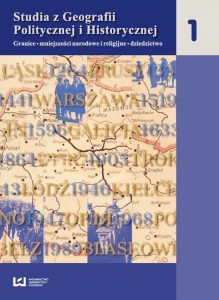Rozwój Kościołów protestanckich w Ameryce Łacińskiej
Expansion of Protestant churches in Latin America
Author(s): Zofia Kozłowska-SochaSubject(s): Essay|Book Review |Scientific Life
Published by: Wydawnictwo Uniwersytetu Łódzkiego
Keywords: Kościoły protestanckie; Ameryka Łacińska; Stany Zjednoczone; fundamentalizm; Protestant churches; Latin America; fundamentalism
Summary/Abstract: W artykule przedstawiono rozwój Kościołów protestanckich w Ameryce Łacińskiej na przykładzie czterech krajów (Meksyku, Kuby, Brazylii i Gwatemali). Praca obejmuje okres od czasów konkwisty i momentu powstania pierwszych wspólnot protestanckich w XVIII w., poprzez czas bardzo intensywnego rozwoju w XX w., aż do czasów obecnych. Celem pracy było wyjaśnienie przyczyn niezwykle bujnego rozwoju protestantyzmu na kontynencie południowoamerykańskim, wraz z określeniem wpływu polityki zagranicznej Stanów Zjednoczonych na rozwój misji Kościołów amerykańskich na tym obszarze. This paper describes the growth of the Protestant churches, especially from the Pentecostal background, in Latin America. This article covers the period from its inception in the eighteenth century, the time of intense growth in the twentieth century until the present day. The idea of the first part of the study was to describe the current condition of the mentioned churches, and their more aggressive version, the Fundamentalist churches that acquire many believers in Latin America. This work is also an attempt to answer the question if the geopolitical situation and the impact of U.S. foreign policy have an influence on the matter. The second part is an analysis of particular countries, their history and politics, as well as social conditions. As an example the author introduced four countries: 1. Brazil, which is home to the largest number of Protestants in the region, although it is traditionally identified as a Catholic country. The study contains a brief description of the largest churches in an attempt to capture cross-section of social structure of the growing religious groups. 2. Mexico, unlike Brazil, a country with a relatively small percentage of Protestants, despite the government's support for Protestant churches associated with periodic anti-clericalism and proximity to the United States. 3. Guatemala is a country of particular interest from the point of view of the author. The country was torn by an ongoing civil war since 1960 till 1996, during which, the rule was held by, among others, Efraín Ríos Montt, a member of a Protestant church Iglesia El Verbo. 4. The last described the country is Cuba, which, like Guatemala, shows how great impact on the development of the church history and politics have. Despite the vigorous development of the Protestant churches in the 1950s of the 20th century, this country has the smallest number of Protestants among the presented countries. This paper describes the roots of popular denominations and missions in the region
Journal: Studia z Geografii Politycznej i Historycznej
- Issue Year: 2012
- Issue No: 01
- Page Range: 243-269
- Page Count: 27
- Language: Polish

